MicroSave conducted an assessment of fertilizer subsidy, the second-largest subsidy after food that GoI provides, in 14 districts across India. This report captures the key findings and actionable solutions for its smooth implementation.
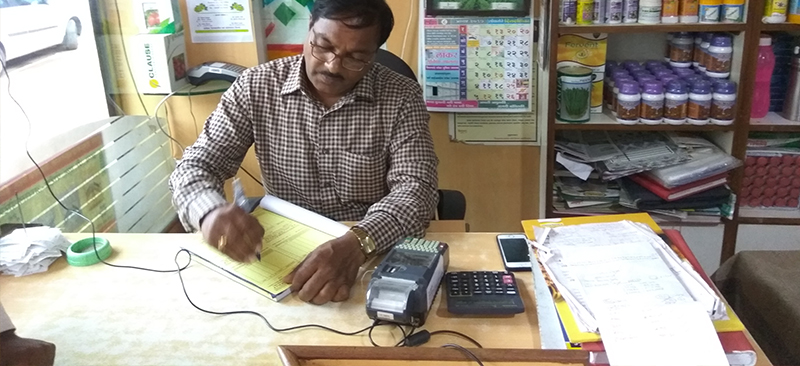
MicroSave conducted an assessment of fertilizer subsidy, the second-largest subsidy after food that GoI provides, in 14 districts across India. This report captures the key findings and actionable solutions for its smooth implementation.
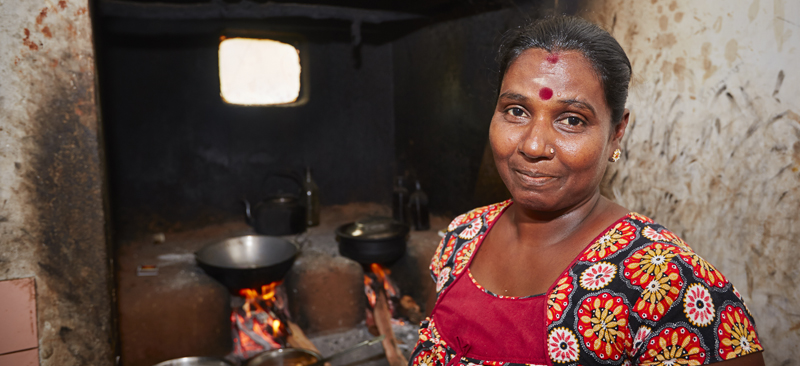
Kerosene is a distillate petroleum product that serves as a primary source of fuel for lighting and also used to start the wood or cow dung-fired stoves used for cooking by poor and marginal households in India. Subsidised kerosene is distributed to eligible beneficiaries through a network of agent-appointed Fair Price Shops (FPSs). The price of subsidised kerosene and entitlement varies between INR 16–18 (USD 0.25–0.28) and 1.5–6 litres per household respectively. The subsidy budget for kerosene is at INR 8,000 crore (USD 1.23 billion). This is far less than the food subsidy at INR 145,338 crore (USD 22.36 billion). The government manages both food and kerosene subsidy at the same scale by managing the distribution through FPSs. Hence, it is administratively and economically difficult to manage this important yet comparatively small subsidy programme at a scale similar to the food subsidy.
Moreover, critics of the kerosene subsidy argue that kerosene is a heavily polluting fuel and 41% of the kerosene being subsidised for domestic purposes is diverted for commercial use. Now, the Government of India has asked oil marketing companies (OMCs) to keep raising the prices of subsidised kerosene by INR 0.25 (USD 0.004) every fortnight until the subsidy is eliminated, or until further orders. While the arguments against kerosene are not without merit, the decision to (or hope to) rationalise its use by increasing price or phase out kerosene needs careful examination.
As a first step towards improving the management of the existing kerosene distribution system, the Government of India encouraged states to adopt Direct Benefit Transfer (DBT) in kerosene. This draws on the recent success of DBT in liquefied petroleum gas (LPG). Jharkhand was the only state that agreed to pilot-test the scheme, which was carried out in four districts – Chatra, Hazaribagh, Khunti, and Jamtara.
 DBT in kerosene is a conditional cash transfer programme under which beneficiaries buy kerosene at a non-subsidised price from an FPS, using biometric authentication. The government then transfers an amount equal to their expenditure on subsidy directly into the bank account of eligible beneficiaries. For instance, in Jharkhand, non-subsidised kerosene is available at approximately INR 28 (USD 0.43) per litre at FPSs. The government transfers a subsidy amount of INR 10 (USD 0.15) per litre to the bank account of eligible beneficiaries who have made a purchase.
DBT in kerosene is a conditional cash transfer programme under which beneficiaries buy kerosene at a non-subsidised price from an FPS, using biometric authentication. The government then transfers an amount equal to their expenditure on subsidy directly into the bank account of eligible beneficiaries. For instance, in Jharkhand, non-subsidised kerosene is available at approximately INR 28 (USD 0.43) per litre at FPSs. The government transfers a subsidy amount of INR 10 (USD 0.15) per litre to the bank account of eligible beneficiaries who have made a purchase.
Another option, which perhaps seems more likely, is to completely phase out subsidised kerosene. This has been done in Haryana and Delhi. This note analyses the feasibility of alternative options to replace kerosene for lighting and cooking.
Alternatives for Lighting: The first alternative for lighting is electrification. While most of rural India is classified as “electrified”, this does not paint a true picture of the on-the-ground reality. According to a National Sample Survey Organisation (NSSO) survey, 26.5% of rural households still use kerosene as their primary source for lighting. The dependence on kerosene for lighting is very high in the rural parts of Bihar and Uttar Pradesh at 73.5% and 58.5% respectively. A village is considered electrified if the basic infrastructure to access electricity has been set up, and 10% of households have access to the electricity grid. Thus, 90% of households may not even have access to electricity in an “electrified” village.
A term called “intensive electrification” has been coined to define access to electricity in a better way. A village is considered “intensively electrified” when access to electricity is provided to 100% of households. 72% of villages in India are “intensively electrified” as compared to the 98.7% villages that are “electrified”. We must understand that even for households that are connected to the grid in an intensively electrified village, power cuts at critical hours are common – for instance, between 7 pm and 10 pm, when children study or dinner is being prepared. It seems electricity is a long way from meeting the lighting needs of rural households.
The new Saubhagya scheme is a step in the right direction. It aims to provide electricity connections to over 40 million households in rural and urban areas by December 2018. However, this will only solve the problem of access. The problem of availability and reliability of electricity may still remain because of the weak financial situation of electricity distribution companies and the high costs they face to supply to rural areas.
The second alternative for lighting is solar lamps. As a solution for lighting, solar lamps suffer from two problems. The first is the initial cost barrier. An INR 1,200 (USD 18) solar lamp is not something that many can afford. The second is the problem of maintenance, as service is not easily available nearby if and when an issue arises. Even if solar lamps are provided with easy financing options, one or two sources of light are insufficient for a rural household where children are studying, women are cooking, men socialising, and someone needs to visit the washroom. So poor households will need several solar lamps to meet these diverse needs effectively.
Thus, it seems that even if a rural household is connected to the grid or has solar lamps, people may still have to depend on kerosene to fulfil many of their lighting needs. The situation may not improve unless access, availability and reliability of the grid supply improves or the cost barrier and maintenance issues of solar power are addressed.
Alternatives for Cooking: Another use of kerosene is for cooking purposes. According to the NSSO survey 2011-12, less than 1% of households in rural areas use kerosene as cooking fuel. Kerosene is used only to ignite cooking fuels, such as firewood and dung-cake. In addition, only 5.7% of urban households use kerosene as primary cooking fuel. The alternative for cooking is LPG stoves. The Ministry of Petroleum and Natural Gas (MoPNG), Government of India, has been doing a commendable job to break the initial access barrier through its Pradhan Mantri Ujjwala Yojana (PMUY). We believe that as the scheme evolves to provide universal access, kerosene will no longer be needed for cooking. However, the government should ensure PMUY access before phasing out kerosene subsidy in order to avoid causing inconvenience to people who rely on the fuel.
 Households also use kerosene to run irrigation pumps. However, using subsidised kerosene to run irrigation pumps is against the spirit of the subsidy. Yet an increase in the price of kerosene or phasing out kerosene from the market is sure to have an adverse effect on the agricultural sector. A discussion of the impacts is beyond the scope of this paper but it is something policymakers may want to consider.
Households also use kerosene to run irrigation pumps. However, using subsidised kerosene to run irrigation pumps is against the spirit of the subsidy. Yet an increase in the price of kerosene or phasing out kerosene from the market is sure to have an adverse effect on the agricultural sector. A discussion of the impacts is beyond the scope of this paper but it is something policymakers may want to consider.
Conclusion: It is evident that kerosene is far from losing its status as an essential commodity in rural India. While phasing out kerosene is possible, and should be done, the government needs to ensure that the plan to do so is communicated well in advance. It should also make facilities and infrastructure available to beneficiaries to enable an easier shift to alternatives. Otherwise, the government risks pushing a very vulnerable section of society back into the age of darkness.
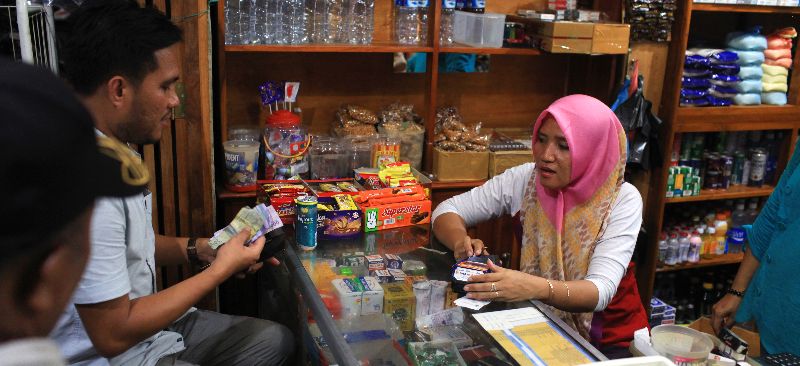
The MI4ID process explicitly incorporates behavioural insights as an integral part of both the exploratory and solution-development processes.
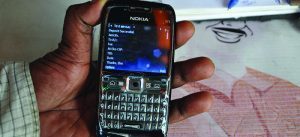
In the previous blog in this series, we discussed the first two steps of the four steps under the Follow the Money Approach (FMA).

Now we consider the next two steps.
Step three: Rank and prioritise
By now, you have 1) identified your key user segments 2) a clear picture of their financial ecosystem along with the value and frequency for each of the footprint or transaction.
The objective of this activity is to collate the key transactions identified into a single analysis framework to help us select the best transactions/footprints to focus on and plan accordingly for the short, medium and long-term.
Following is a sample analysis framework with some suggestive attributes, each of which needs be assigned a score on a scale of 1 to 5 based on its impact and relevance. The score then will be totaled in the second last column to help prioritize.
Priority matrix: Use Case 1, Rural, farm and other mix sources of income household

A couple of useful points to remember during this step:
It does sound difficult to pursue several types of transactions at the same time and it is easy to just focus on one and be the best. True, in the short run. But, basing your entire business model on only one or two footprints has several critical disadvantages:
And, there is not much point making only payments easy if clients have to make a lot of effort to bring/convert their inflow on your platform and likewise if it is difficult for them to make payments or withdrawals from your platform. This is not to say that making payments (or for that matter a single transaction) easy for end users is not important. But, it is to say that making just one footprint in the ecosystem convenient without looking at the entire ecosystem will not add sustainable value to the client and therefore ultimately the service provider. It makes the service provider very vulnerable to competition and other external factors.
Step four: Draft an action plan based on the above
This last step is simple. A bit too simple that one and may want to skip it entirely. However, converting priorities into actionable activities is an extremely crucial step to convert all the efforts made so far into some useful action and thus results. Therefore, a simple but quick action plan and roadmap is developed based on the above priorities. The action plan will ideally contain activities such as developing a customized offer/business models for various partnerships, arranging meetings with them, designing process flows, upgrading so and so module of the technology etc.
Make it yours. Use it. Share.
If you have been a part of the strategic planning process for your digital finance deployment, you would have surely thought about many of these points or issues. But, this framework helps you to be a bit more methodical and structured in your approach. It also helps you look at the larger picture and decide where you want to stand. In our experience so far, this approach has been immensely helpful in providing a great deal of clarity is often a very complex and rapidly evolving environment.
The idea is to share and spread what works and test its wider applicability. It is to encourage and challenge you to use it in your own institutions and context. Feel free to customize and modify it. We would be extremely happy to hear from you and listen to your thoughts, opinions, and feedback as well as to be of any help we can in providing more clarity on this approach.
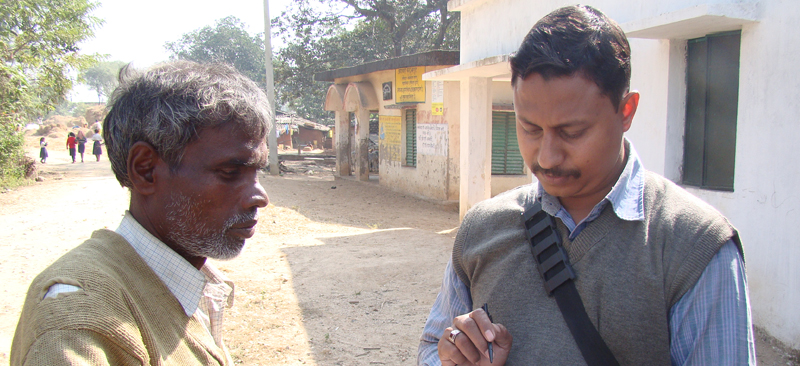

Readers and leaders! More than ever, the world is banking on fintech to accelerate the pace of financial inclusion at the base of the pyramid. Countries around the world have been working on aspects of digital identity, simplified user interfaces, and government–people partnerships to bring financial inclusion to the unbanked. In 2017, MicroSave published a number of blogs that highlight the progress and challenges that DFS faced in achieving financial inclusion for the neglected segments. Here is a roundup of our top 10 blogs for 2017.
Key New Year Resolutions for the Success of Digital Financial Services
We started 2017 with our Group Managing Director, Graham A.N. Wright, writing about the challenges for DFS in achieving full financial inclusion. Graham mentions digital credit and trust deficit as the major culprits that hinder the progress of DFS. He notes that ultimately we need an overarching strategy to address the two inter-related challenges of trust and digital credit. We need to encourage low-income people to maintain and use digital liquidity, which would deepen their digital footprints and allow digital credit providers to reduce their interest rates.

Payment Systems in India and Current Status: A Perspective
While we published this blog in 2016, our readers have referred and revisited it several times in 2017 to understand the progress and challenges of payments systems in India. The blog highlights how payment systems have evolved in the country. It lists some of the broad trends that will redefine fintech in the times to come.
Can Fintech Really Deliver On Its Promise For Financial Inclusion?
Graham received an invite for the MasterCard Foundation Symposium on Financial Inclusion in 2017. At the closing debate, the symposium requested him to support the proposition that “disruptive innovations in the financial sector can no longer respond to the daily challenges of poor people”. This resulted in this analysis of why fintech in its current form may be largely irrelevant to rural people – a segment that should actually be using fintech for financial inclusion.
Graham also went on to explain how fintechs can become relevant and valuable for this segment and thus access The Clear Blue Water on the Other Side of the Digital Divide.
How Smart are Smartphone Lending Apps in Kenya?
The mobile digital credit revolution in Kenya has attracted many fintechs that offer loans through smartphones. Industry experts have promoted smartphone-based products for their potential to improve the user experience for digital financial services, particularly among low-literacy customers. This blog summarises the usability challenges of four major smartphone lenders in Kenya – Branch, Tala, Saida, and Zidisha.
Leveraging Fintech to Achieve Financial Inclusion in Indonesia
Although we published this blog in 2016, we saw many readers return to the blog to revisit the progress of fintech in Indonesia. With 339.9 million connections, Indonesia is the fourth-largest mobile market in the world – a SIM penetration of 131%! Among Indonesians, 43% already own a smartphone. Indonesia has also been going ‘mobile-first’. Currently, it has 64.1 million out of a total of 88.1 million users who access the Internet through mobile devices. This blog examines the growing pace of fintech penetration in the Indonesian market.
Can Instant Messenger Disrupt the Digital Payments Market in India?
Instant messaging apps, such as WhatsApp, have a large daily active user base, especially among smartphone users. They, therefore, have massive potential to influence the digital behaviour of users irrespective of their age, groups, and affinity to other digital payments solutions. As India continues to leapfrog towards digital innovation, it will be interesting to observe how WhatsApp evolves from a messaging app to add features like a payments-plus app.
Open Application Programming Interfaces (API): Purpose and Possibilities
The blog discusses the Open Application Programming Interfaces (APIs) and examines their purpose and possibilities. It highlights how properly designed APIs can provide benefits to both providers and users, and have a positive impact on customers.
Have the Portfolio Diversification Strategies of Kenyan Microfinance Banks Failed?
Despite several initiatives, almost all performance indicators for Microfinance Banks (MFBs), such as profitability, non-performing loans (NPLs), and portfolio-at-risk (PAR) deteriorated in 2016. Microfinance Banks (MFBs) need to reverse these worrying trends, MFBs in the industry may have to focus on continuous institutional reinvention and capacity-building, from the level of the board to the client-facing staff. The blog discusses how MFBs should formulate a detailed strategy that focuses on growing healthy portfolios and outlining risk-mitigation procedures.
Designing User-Friendly USSD Interface for Digital Financial Services
A study in Malawi forms the basis of this blog. It highlights how simplified Unstructured Supplementary Service Data (USSD) interface and convenience to use mobile money services are the major factors that lead to higher uptake and regular use of mobile money. The blog examines the effect that USSD has on reduced dependence on agents for transactions and increased self-use of mobile money accounts by customers.
How Can Providers Make Digital Credit More Profitable?
The blog discusses the key drivers for high s rates for digital credit. It also highlights that there is a clear need to reduce the risk premium for borrowers of digital credit. While this may be difficult during the first couple of loan cycles, it should be feasible during later loans cycles once the borrower has established a credit history and wishes to borrow larger amounts. Doing so should encourage timely repayment and increase borrower loyalty and thus profitability of digital credit providers.
These were the 10 most-read blogs for 2017 from our library. Visit our website for other such engaging reads.
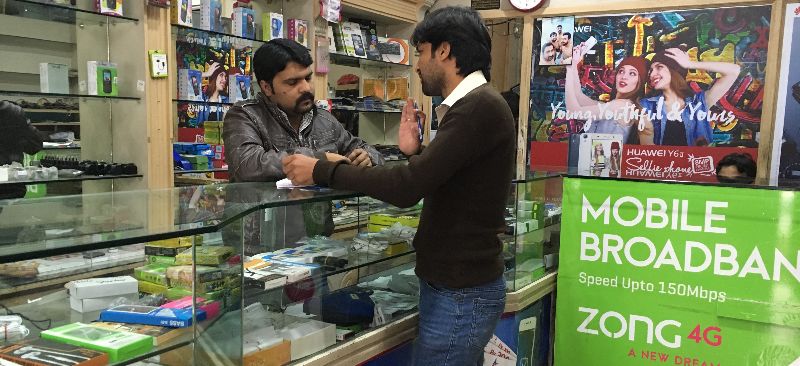
The success of a branchless banking network is entirely dependent on the ability of its agents to deliver high-quality services to the target market, that are in line with providers’ objectives. Three years ago, the Helix Institute of Digital Finance’s team first set off to study Pakistan’s agent network and inform on its efficiency, providing insights for improvement, as well as highlighting the opportunities for the DFS community. What we found was a fractured, but highly competitivemobile money market. Opportunities for progress were abound, and the DFS community was excited for a future of innovation spurred by the competitive environment.
This year we went back to agents for a second wave of the Agent Network Accelerator study, funded by Karandaaz Pakistan to investigate how Pakistan’s mobile money market has evolved since the previous wave of the study in 2014. This blog highlights the key findings from the study.
Maturing Market
Pakistan has established a large agent network via franchises, where the majority (90%) of agents act as retailers under them. The latest figures from the State Bank of Pakistan (SBP)[1] indicate that providers have registered over 360,000 agent tills, although a significant number (approximately 30%) are inactive. New tills continue to be issued, albeit at a slower rate (2%)[2] in the first quarter of 2017 than in the same period last year (13%)[3]. As a result, the network is maturing: in 2014, 40% of the agents were less than a year into operation, compared to just 7% this year.
 Despite the evolving market dynamics in Pakistan, the larger providers supported by MNOs continue to dominate the DFS landscape despite offering similar products and models as other players. Telenor Easy Paisa, Mobilink Jazzcash and Ufone Upaisa account for three-quarters (76%) of the market presence, having a bigger share of the agent market presence than the pure bank led operators.
Despite the evolving market dynamics in Pakistan, the larger providers supported by MNOs continue to dominate the DFS landscape despite offering similar products and models as other players. Telenor Easy Paisa, Mobilink Jazzcash and Ufone Upaisa account for three-quarters (76%) of the market presence, having a bigger share of the agent market presence than the pure bank led operators.
Having driven the mobile money revolution in Pakistan, Telenor Easypaisa maintains the largest presence of agents (32%), holding steady at 2014 levels. Meanwhile, Mobilink Jazzcash is catching up to their main competitor. It has expanded its market presence to 30%, with a 7% growth since 2014. Warid’s Mobile Paisa previously had a market presence of 5% in 2014, and so at least some of Mobilink Jazzcash’s growth may be attributable to its absorption of Warid’s mobile money business after the merger.
Commissions battles to win agents and thereby customers led to smaller providers being bled dry. Although their mobile money services are still operating and available, many agent tills for these providers are now dormant due to a lack of demand for their services. The DFS market is poised to become less competitive in the future unless the small providers can reinvigorate their mobile money businesses and reactivate their dormant agents.
Increasingly Shared but Efficient Network
Pakistan is a leader in shared agent networks: both in terms of non-exclusivity[4] and non-dedication,[5] the highest levels of any other market. Virtually all (96%) agents in Pakistan are running parallel businesses, and more than three-quarters (78%) are serving multiple providers, up from 66% in 2014. Only larger providers maintain some level of exclusivity within their networks, which isn’t surprising, as smaller providers recruited agents from the existing networks of bigger players. Agents can invest only a limited amount for float for their business, but high rates of non-exclusivity, mean agents are often serving a median of 3 providers, who must compete for their agents float investment. As a result, those providers facing a higher demand for their services win, especially since commission wars came to an end.
Although most agents are generally small, they are earning reasonable profits (US$149[6]) and are largely satisfied and optimistic, with most agents continuing to see themselves remaining agents for another year. Although profits do seem to be declining since 2014, this could be largely the result of lower commissions from the providers. Another reason is relatively high operating expenses, which are the highest amongst the ANA markets. Liquidity management and delivery systems are also more efficient than previously reported, with the majority of agents now having their liquidity delivered and fewer agents travelling to rebalance their accounts. Most agents also receive regular visits from support staff; a few also access on-demand facilities.
 Gradual Movement from OTC to Wallets
Gradual Movement from OTC to Wallets
Product innovation and diversification are crucial for mass uptake and adoption of mobile money. Although providers seem to be complying with the regulator’s push for OTC to wallet transition, they have largely failed to propose valuable use cases for customers to propel registration and regular wallet account use. While agents are offering a broader array of services, OTC transfers remain the modus operandi for the market with 99% of agents performing these transactions, with bill payment coming in second.
 More agents now offer wallet registration services, but they constitute only one-third (34%) of the network compared to nearly double that (62%) for MNO agents in Kenya.[7] Agents do not appear to be concerned about the transition from OTC to wallet services, and an additional 46% of agents want to offer this service but have not yet been granted this capability by the providers, which may hinder Pakistan’s progress on financial inclusion strategy, focused mainly on digital account registration.[8] The product offering may be a reflection of the low levels of product awareness on the demand side as agents cite this as a hindrance to registering customers. Ideally, if providers want customers to transition to wallets fully, wallet cash in and out services should be offered universally by agents, compared to just 70% and 69% respectively, offered currently.
More agents now offer wallet registration services, but they constitute only one-third (34%) of the network compared to nearly double that (62%) for MNO agents in Kenya.[7] Agents do not appear to be concerned about the transition from OTC to wallet services, and an additional 46% of agents want to offer this service but have not yet been granted this capability by the providers, which may hinder Pakistan’s progress on financial inclusion strategy, focused mainly on digital account registration.[8] The product offering may be a reflection of the low levels of product awareness on the demand side as agents cite this as a hindrance to registering customers. Ideally, if providers want customers to transition to wallets fully, wallet cash in and out services should be offered universally by agents, compared to just 70% and 69% respectively, offered currently.
Sluggish Adoption of Biometric Verifications
As of June 2017, agents are required to have Biometric Verification System (BVS) machines to verify OTC transactions.[9] These regulations are part of the regulator’s initiatives on Anti-Money Laundering (AML) and Combating the Financing of Terrorism (CFT), which has also been credited for lower reports of fraud experienced by agents: Pakistan has one of the lowest rates of agent-reported robbery and fraud among the ANA research countries. However, as mobile money uptake increases, providers will need to ensure their agents are prepared to prevent and mitigate fraud further.
Although providers have begun investing in the transition, they are still falling short, and the rollout appears to be slow and targeted due to the high costs of the BVS machines.[10] More than one-third (38%) of mobile money agents still lack the required BVS machines.Seemingly only better performing and more experienced agents are being equipped – those with average daily OTC volumes of $55USD for agents with BVS machines compared to $44USD for those without them. The absence of verification systems may lead to a downturn in OTC transactions in the short term.
What’s next?
Although the providers in Pakistan have shown some efforts to drive wallet registration and usage and the transition from OTC, they haven’t pushed the envelope far enough, leaving many agents unprepared to register customers. Having provided an overview of the evolution of the DFS agent network, the next blog in the series will explore opportunities and potential strategies to accelerate wallet adoption and thus deepen the mobile money ecosystem in Pakistan by combining insights from the ANA Pakistan study with demand-side research.
For background on the ANA Pakistan survey, data, and reports, please follow this link. The full 2017 Pakistan Report can be found here.
[1] State Bank of Pakistan – Branchless Banking Newsletter – January to March 2017
[2] State Bank of Pakistan – Branchless Banking Newsletter – January to March 2017
[3] State Bank of Pakistan – Branchless Banking Newsletter – January to March 2016
[4] Exclusivity refers to an agent’s choice of providers. If an agent chooses only one provider then that agent is referred to as “exclusive”. However when an agent chooses more than one providers then that agent is referred to as non-exclusive.
[5] Dedication refers to an agent’s choice of business. If an agent choses to only focus on mobile money then that agent is referred to a as a dedicated agent. However, when an agent chooses other businesses e.g. mobile accessories, grocery store, medical store etc then the agent is referred to as non-dedicated.
[6] Median monthly profits – PPP adjusted for 2015
[7] Agent Network Accelerator Study Kenya – 2014 – http://www.helix-institute.com/data-and-insights/agent-network-accelerat…
[8] Pakistan’s Financial Inclusion Strategy – SBP –http://www.sbp.org.pk/ACMFD/National-Financial-Inclusion-Strategy-Pakist…